Ever wondered why hand lining fishing knots are considered essential for your fishing endeavors? Well, let's unravel this mystery.
These knots play a pivotal role in ensuring your fishing gear stays securely attached, but there's more to it than just that.
The strength and reliability of your knots could be the difference between landing that prized catch or experiencing a disappointing loss.
So, let's explore into the world of fishing knots and discover why mastering this skill is essential for any angler looking to up their game.
Key Takeaways
- Critical for securing gear and ensuring successful catches
- Strong knots vital for fighting fish and maintaining connection
- Mastery of essential knots boosts fishing success significantly
- Regular practice and testing maintain knot reliability and performance
Importance of Hand Lining Knots
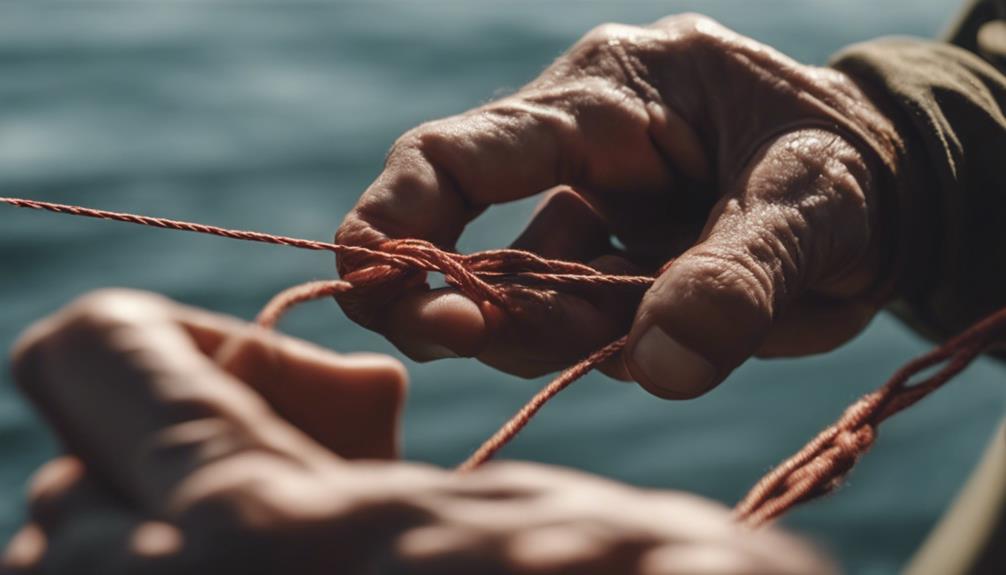
Mastering hand lining fishing knots is essential for ensuring a successful fishing experience. These knots play a critical role in securing your gear, including hooks, lures, and swivels, ensuring that nothing gets lost in the depths.
Strong knots are your best friends, preventing breakage and guaranteeing that the catch you hook stays hooked. Properly tied knots not only keep your gear secure but also contribute to smooth casting and give you better control when reeling in a feisty fish.
Understanding a variety of hand lining knots makes you versatile, ready to adapt to different fishing scenarios. So, take the time to practice and perfect your knot-tying skills; it's a small effort that can make a big difference out on the water.
Types of Essential Fishing Knots
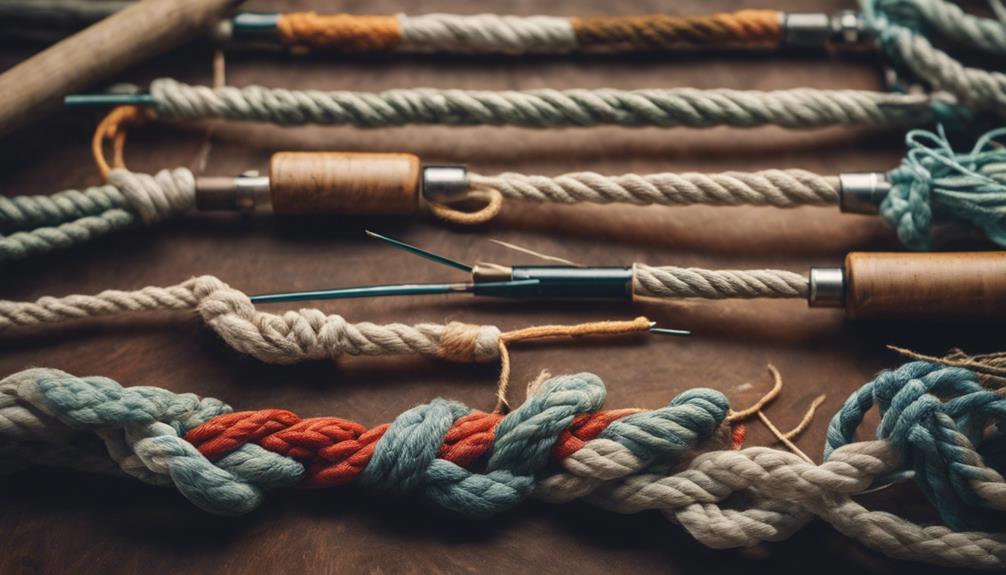
When fishing, knowing essential hand lining knots is important for success, as they secure your gear effectively. Here are three types of essential fishing knots to master:
- Palomar Knot: A popular choice due to its strength and reliability.
- Improved Clinch Knot: Versatile and easy to tie, suitable for various fishing applications.
- Trilene Knot: Known for its reliability and ease of tying.
These knots, like the Uni Knot and San Diego Jam Knot, are strong and versatile options commonly used in hand lining fishing. Mastering these essential fishing knots will help you secure your hooks and lures effectively, increasing your chances of a successful catch.
Strength and Reliability of Knots
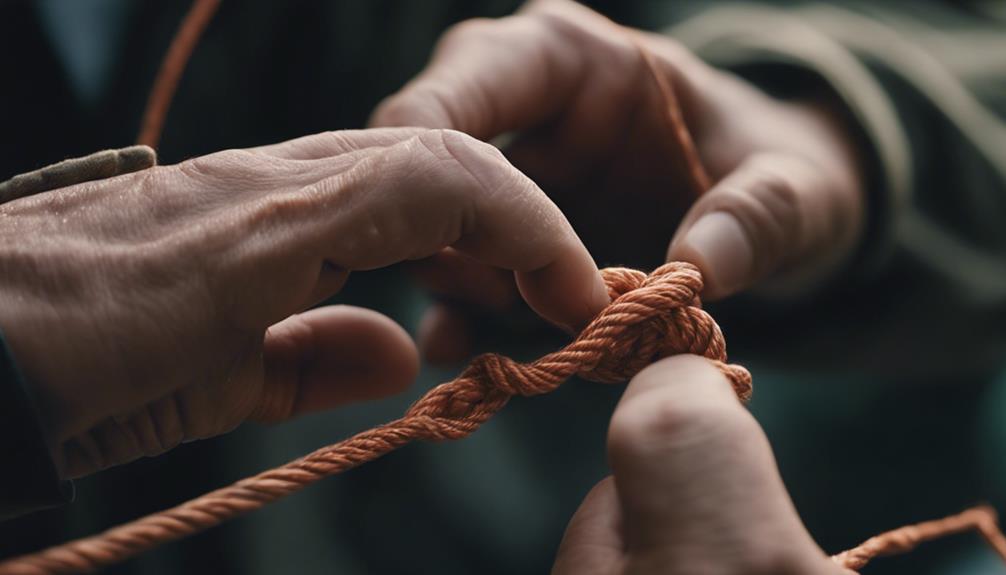
To guarantee successful fishing experiences, the strength and reliability of your knots are paramount. When you hook a fish, you need a good knot to make sure your line can handle the fight. A well-tied knot keeps your bait secure and gives you the confidence to reel in your catch without worrying about breakage.
Whether you're battling a large fish or fishing in tough conditions, a strong knot is your lifeline. Handlines rely on sturdy knots to maintain the connection between you and the fish. Understanding which knots to use and how to make them is vital for landing fish successfully.
Techniques for Tying Fishing Knots
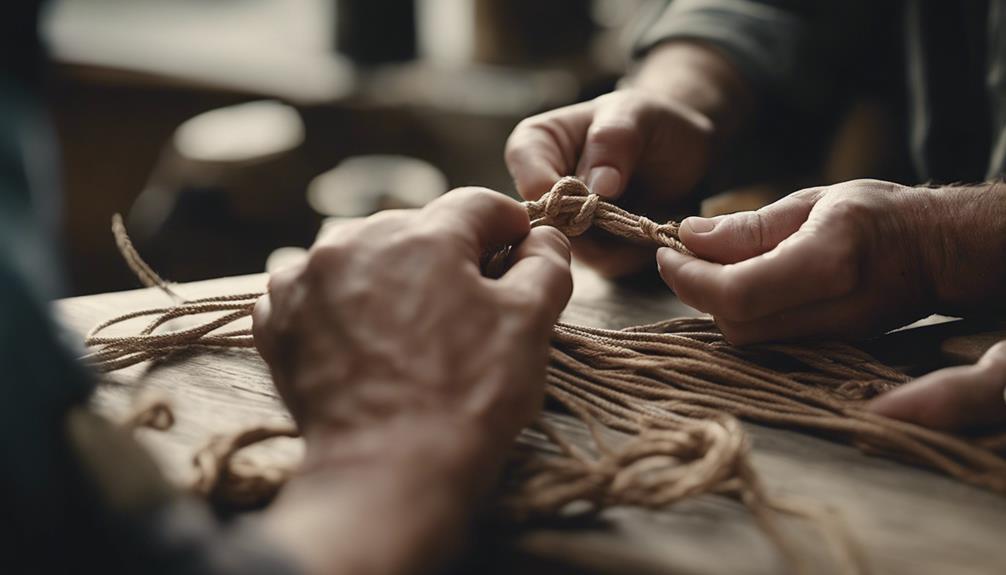
For successful fishing outings, mastering the essential techniques for tying fishing knots is crucial. When it comes to tying knots for your fishing line, here are three key techniques to help you catch more fish:
- Practice with Different Lines: Use both braided and monofilament lines to understand how each behaves when tying knots.
- The Improved Clinch Knot: This is a reliable and straightforward knot. Pass the tag end through the eye of the hook, wrap it around the standing line five times, then pass the tag end through the loop near the eye and the first loop. Moisten and pull tight.
- Watch the Knot Form: Make sure the knot forms correctly as you tie it. This helps you identify any mistakes early on and leads to a good knot for catching fish.
Enhancing Fishing Success With Knot Mastery
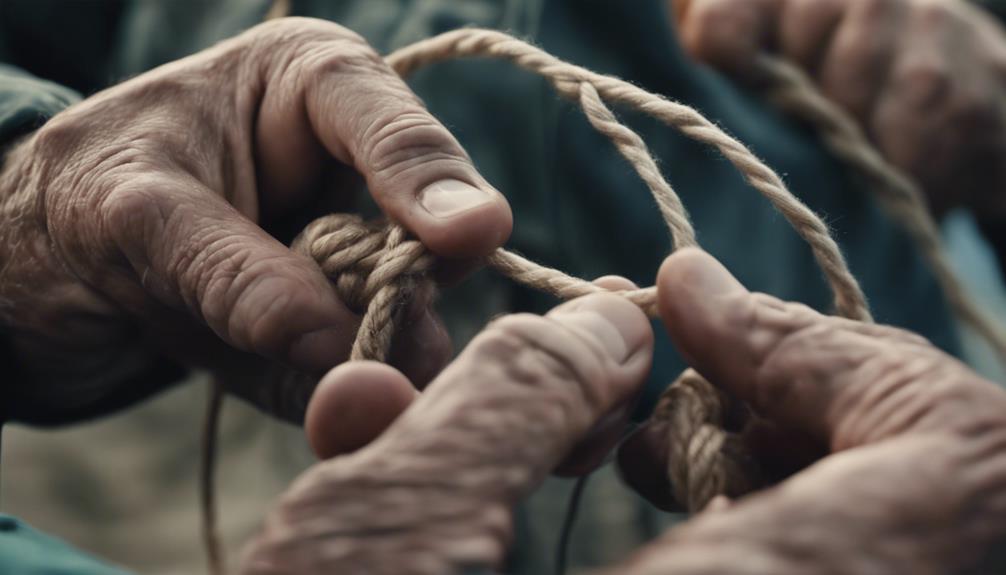
Mastering handlining fishing knots is key to boosting your success on the water by securely attaching hooks, lures, and swivels. Properly tied knots prevent breakage, ensuring you don't lose that prized catch during the fight.
Understanding the different knot types available and when to use them will increase your versatility in various fishing scenarios. Factors like the type of line you use, your tying technique, and wetting the knot before tightening all play a role in the strength of your knots.
Remember to regularly test and re-tie your knots to guarantee peak performance and reliability. By mastering knot tying, you set yourself up for success and maximize your chances of landing the big one.
Conclusion
So, now you know why hand lining fishing knots are so important. By mastering different knot-tying techniques and ensuring they're strong and reliable, you can prevent losing your gear and catch more fish.
Practice at home, take your time, and soon enough, you'll be a knot-tying pro. With the right knots, you'll have more successful fishing trips and feel confident in any fishing situation.
Happy fishing!
👨👩👧👦 Dwight’s a married dad of 4 who loves to cast a line 🎣 into both fresh and salt waters. His heart belongs to his family and the sea. 🌊 #FamilyMan #FishingLife #DadOf4 🐟✨

